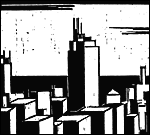Jonathan Schell, The Fate of the Earth (Alfred A. Knopf, 1982) Reissued in both hardcover and paperback with The Abolition by Stanford University Press, 2000. This outdated, alarmist prophesy of a post-nuclear war world may have served a purpose in the Cold War era when it was published, but Jonathan Schell's talk of catastrophic war with Russia seems like a remote possibility now. Schell is clear that the situation described in The Fate of the Earth is strictly hypothetical, but he never seems to care whether his account is actually true — he never wanted to be proven right or wrong. "When one tries to face the nuclear predicament," he writes, "one feels sick, whereas when one pushes it out of mind, as apparently one must do most of the time in order to carry on with life, one feels well again. But this feeling of well-being is based on a denial of the most important reality of our time, and therefore is itself a kind of sickness. A society that systematically shuts its eyes to an urgent peril to its physical survival and fails to take any steps to save itself cannot be called psychologically well." Nonetheless, Schell describes how the then-current capacities of nuclear warheads would destroy every square inch of the country, and how and when the entire population would die. Most people, he surmised, would be killed in the first few strikes against major cities; then, residents in medium cities and smaller towns would be killed by the blasts of second-run nuclear warheads that weren't used in the initial destruction. Anyone still alive afterward would face a toxic environment with pervasive radiation that would kill them with radiation sickness within a few months or would certainly make agriculture and livestock cultivation impossible. Schell's description of a nuclear blast in Manhattan is chilling to those who walk the streets every day. "If it were possible (as it would not be) for someone to stand at Fifth Avenue and Seventy-second Street (about two miles from ground zero) without being instantly killed, he would see the following sequence of events. A dazzling white light from the fireball would illumine the scene, continuing for perhaps thirty seconds. Simultaneously, searing heat would ignite everything flammable and start to melt windows, cars, buses, lampposts, and everything else made of metal or glass. People in the street would immediately catch fire, and would shortly be reduced to heavily charred corpses. About five seconds after the light appeared, the blast wave would strike, laden with the debris of a now nonexistent midtown...The four-hundred-mile-an-hour wind would blow from south to north, die down after a few seconds, and then blow in the reverse direction with diminished intensity.... Soon huge, thick clouds of dust and smoke would envelop the scene, and as the mushroom cloud rushed overhead (it would have a diameter of about twelve miles) the light from the sun would be blotted out, and day would turn to night." Schell was a staff writer at The New Yorker when he published this book in three parts. He also wrote The Village of Ben Suc, The Military Half, The Time of Illusion, The Abolition, History in the Sherman Park, The Real War, Observing the Nixon Years, The Gift of Time, The Unfinished Twentieth Century, and The Unconquerable World: Power, Nonviolence, and the Will of the People. MORE: Excerpt from The Fate of the Earth AlterNet.org Interview with Schell Short Author Biography |
 |
|||||||||||||||||||||||||||